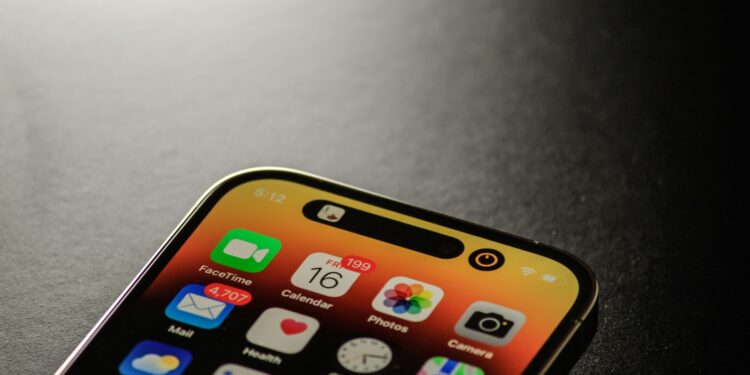The iPhone 17 could be Apple's next big thing, especially if a long-awaited feature turns out to be true: Face ID in the display. This technology would fundamentally change the design of the iPhone and significantly reduce the Dynamic Island, the black area at the top of the display. With new patents and reports from analysts, the time seems to be right. But what is behind these rumors, and how realistic is an introduction on the iPhone 17?
Apple has always strived to combine technological innovation and elegant design. Face ID set a milestone in terms of security and user-friendliness in 2017. Nevertheless, many users have been wanting a more discreet integration of facial recognition technology for years. With the current developments and indications, it seems possible that Apple will finally implement this wish with the iPhone 17.
What is behind Face ID in the display?
Face ID in the display means that the sensors for facial recognition are installed directly behind an active part of the display – without a cutout. Apple has described this technology in various patents. One such patent, which was recently discovered The new iPhone 12 Pro Max describes exactly this approach: The Face ID transmitters and sensors are hidden behind the display, drastically reducing the space required on the front. It works by allowing optical radiation sources and sensors to capture data through the display. This not only improves aesthetics but also creates space for other elements on the screen.
Two reasons why Face ID in the display is likely in the iPhone 17
- A smaller display cutout is expected
Loud analyst reports, including estimates from Jeff Pu and Ross Young, at least one of the iPhone 17 models will have a significantly smaller cutout in the display. The iPhone 17 Pro Max is even said to have a "much narrower dynamic island". The most obvious solution for this would be to move Face ID under the display.
- The slim design of the iPhone 17 Air
Rumors about a new model called the iPhone 17 Air suggest that Apple is focusing on a slim design for this device. To underline the premium character of the device, Face ID in the display could be introduced as an exclusive feature. The Air would score with a more minimalist design and possibly a single camera punch to justify the higher price.
The patents and technologies behind the development
Apple has filed a number of patents in recent years that deal with the integration of Face ID into the display. A recently discovered patent describes how optical radiation sources and sensors can be placed behind an active display area. The technology could be used not only for Face ID but also for other applications such as 3D mapping. Interestingly, this patent also points out that placing it behind the display makes better use of the available space. This development could be particularly important for the upcoming iPhone models, as Apple repeatedly emphasizes the importance of creating compact and elegant designs.
challenges and opportunities
Of course, there are also challenges. Such technology must not only be reliable but also be able to be mass-produced. Previous rumors already suggested that Face ID could be included in the display of the iPhone 15 or 16 - but these predictions have not come true. At the same time, the technology offers a huge opportunity: An iPhone with Face ID in the display would once again position Apple as an innovation leader and could set new standards for the entire industry.
Face ID in the display: reality or wishful thinking for the iPhone 17?
The iPhone 17 could be the first model to integrate Face ID directly into the display. With new patents, analyst reports and growing expectations for a slimmer design, Apple seems ready to take this step. Whether it will really happen in 2025 remains to be seen. But there are increasing signs that Face ID in the display could soon become a reality - and with it a new era for the iPhone. (Photo by Unsplash / James Yarema)
- Apple's foldable iPhone: Hope for a struggling market
- iPhone 17 Pro: Will Apple keep the titanium frame?





